The Palmeral of Elche is a plantation of mostly date palms. The Palmeral of Elche is one of the largest palm groves in the world and the largest in Europe. A palm grove is a typical feature of the North African landscape. It is thought that the first palms were originally planted here by the Carthaginians in the 5th century BC. The Palmeral survived under the Romans. The Palmeral that still exists today was created when much of the Iberian Peninsula was Arab. The palm trees are planted along a network of irrigation canals. This irrigation system was extended during the Arab period and is still in use today. The irrigation canals create a patchwork of small orchards, called huertos. One of the most date palms is the Imperial Palm, the Palmera Imperial, named after Empress Elisabeth 'Sisi' of Austria, who visited the Palmeral of Elche in 1894. The Imperial Palm is situated in the Jardín Huerto del Cura. The Palmeral s situated in Spain, about 180 km south of Valencia. The Palmeral of Elche was declared a UNESCO World Heritage in 2000.
www.werelderfgoedfotos.nl © Copyright World Heritage Photos
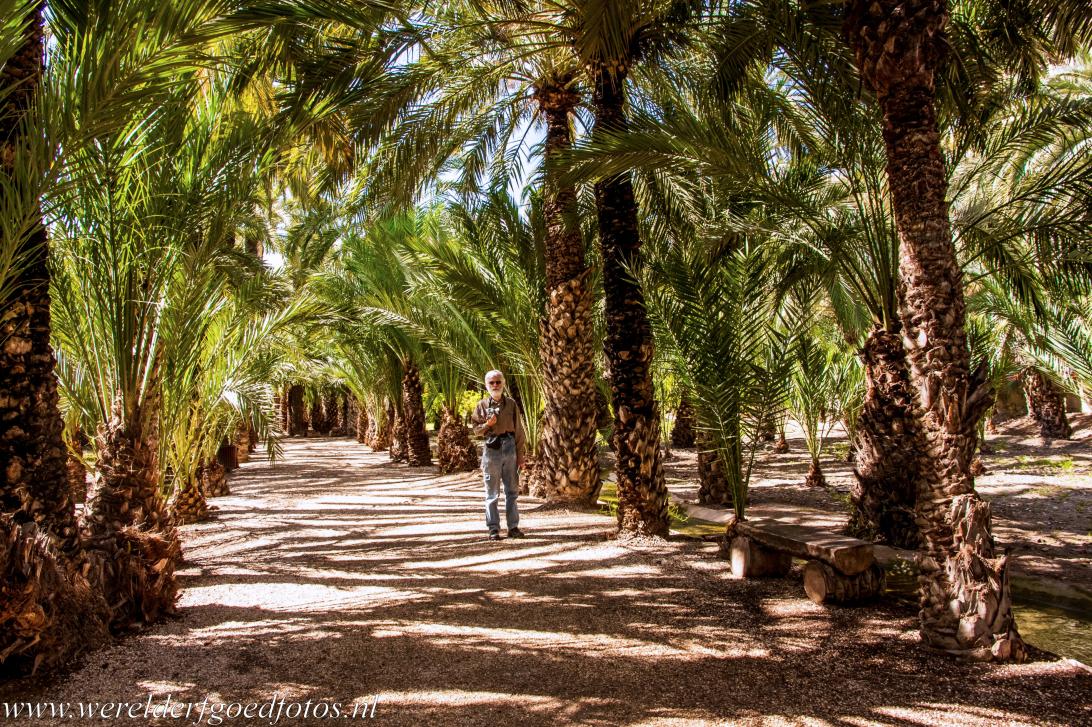
Shaded by date palm trees, you can take a walk through the Palmeral of Elche. The Palmeral of Elche is one of the largest palm groves in the world and the largest palm grove in Europe. The Palmeral is situated in the heart of the Elche, a large city in the southeastern part of Spain. The Palmeral of Elche gained the status as a UNESCO World Heritage in 2000.

Shaded by date palm trees, you can take a walk through the Palmeral of Elche. The Palmeral of Elche is one of the largest palm groves in the world and the largest palm grove in Europe. The Palmeral is situated in the heart of the Elche, a large city in the southeastern part of Spain. The Palmeral of Elche gained the status as a UNESCO World Heritage in 2000.
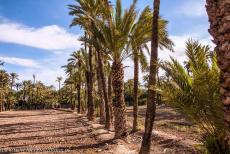
The Palmeral of Elche is composed of 97 different orchards, called huertos. It is thought that the first date palms were originally planted here in the 5th century BC by the Carthaginians who had settled in southern Spain. The palm trees are planted in single and double rows. The Palmeral survived under the Romans and was extented during the Arab rule over Spain from 711 to 1492.
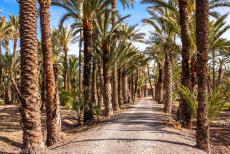
The Palmeral of Elche covers an area of about 3.5 km² and is an oasis in the city of Elche. As the city spread in the 17th century, hundreds of palm trees were cut down, but the Palmeral is still an imposing landscape. Today, the Palmeral contains about 70,000 date palms. The Palmeral of Elche is an magnificent example of the North African horticulture on the Iberian Peninsula.
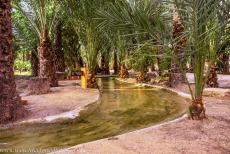
Palmeral of Elche: The palms are planted along a network of irrigation canals, the water comes from the River Vinalopó, the irrigation network was extended during the Arab period and is still in use nowadays. The same irrigation techniques are still used around oases in North Africa. The date palms are planted in orchards bounded by stone walls covered with white plaster.
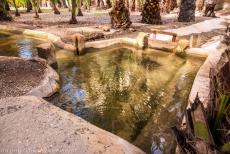
Palmeral of Elche: A small wooden sluice gate in one of the irrigation canals, the sluice gates are used to control the flow of water in the irrigation canals. The system of irrigation canals create a large patchwork of agricultural plots, smaller orchards, the huertos. Every orchard has a name referring to its owner or a historical event, the most famous is the Jardín Huerto del Cura.
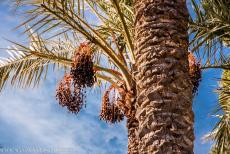
The Palmeral of Elche is a plantation of mostly date palms. The first palm trees were probably planted by the Carthaginians in the 5th century BC. Nowadays, the dates of the Palmeral are used for local consumption. A palm grove is a typical feature of the North African landscape. Representations of palm trees already appears in Egyptian hieroglyphics some 5000 years ago.
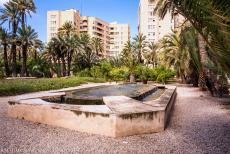
A cascade fountain in the Palmeral of Elche, the city of Elche in the background. The Palmeral is situated in the heart of Elche and is still a green oasis inside the city. The formal landscape of the Palmeral that still exists today was created when the city of Elche was founded in the 10th century. The Palmeral is situated in the eastern part Elche. The city is also known as Elx.
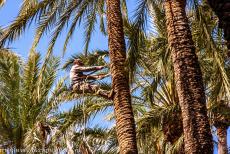
The Huerta del Cura is a small botanical garden situated inside the Palmeral of Elche, the garden contains around thousand palm trees. In the Jardín Huerta del Cura you can see how to climb a palm tree to harvest the dates. Date palm trees have been cultivated since ancient times. People has exploited palm trees for thousands of years.
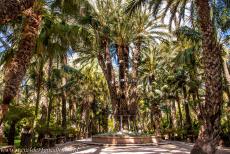
The Palmeral of Elche: A famous date palm is the Imperial Palm, the Palmera Imperial. The palm is named after Empress Elisabeth of Austria, also known as Sisi. Sisi visited the Palmeral of Elche in 1894. In 2014, the Imperial Palm was estimated to be al least 170 years old. The Imperial Palm is situated in the Jardín Huerto del Cura, the most populair garden in the Palmeral.
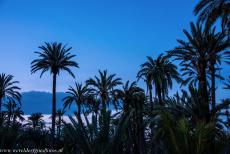
The Palmeral of Elche by night. The Palmeral of Elche is one of the largest palm groves in the world and the largest palm grove in Europe. The Palmeral of Elche is a plantation of mostly date palms. Elche is also known as the City of Palm Trees. The Palmeral of Elche was inscribed on the UNESCO World Heritage List in 2000.
